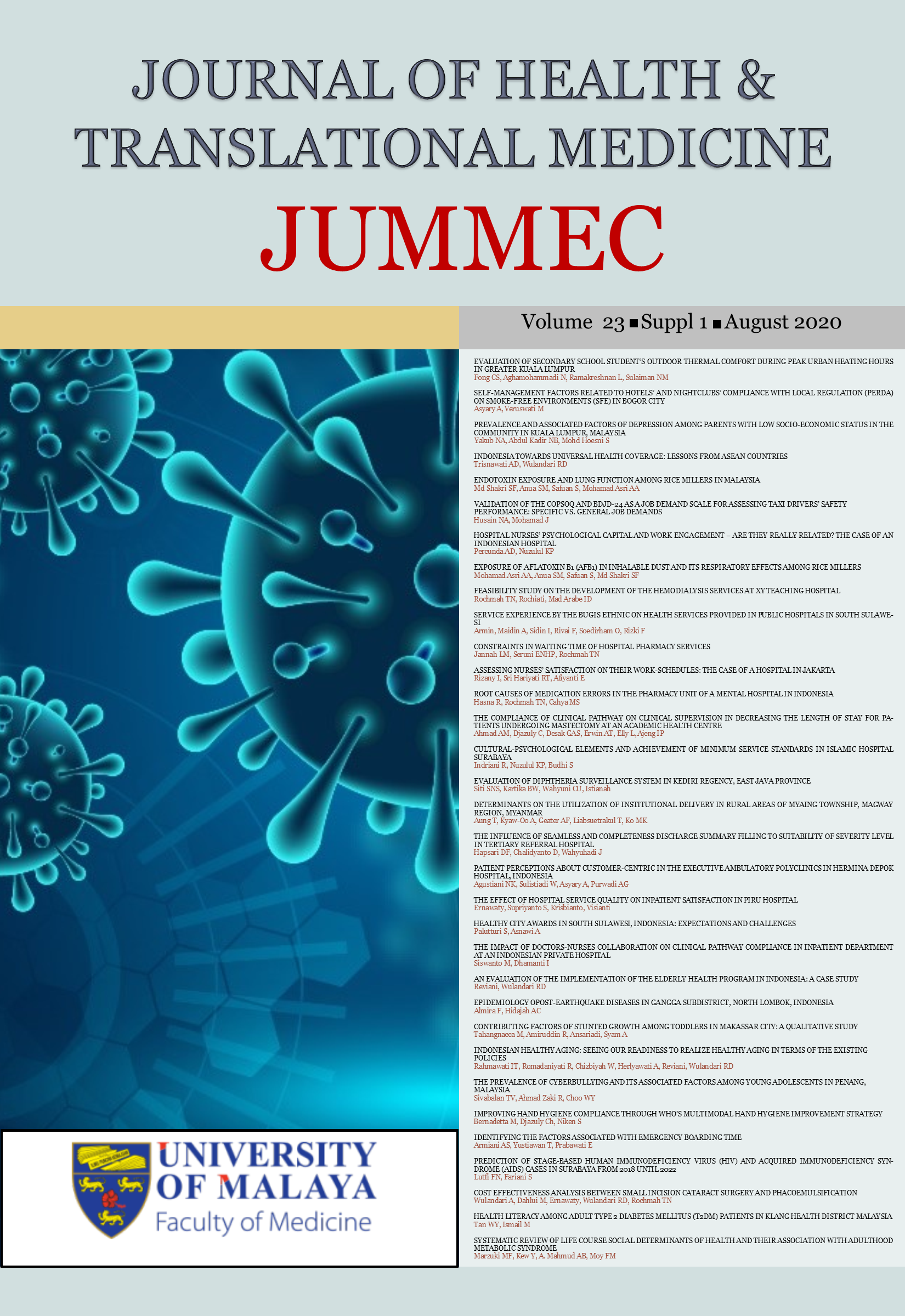IDENTIFYING THE FACTORS ASSOCIATED WITH EMERGENCY BOARDING TIME
Keywords:
Emergency severity index, Emergency boarding time, Resource consumptionAbstract
Background: Patients’ Emergency Boarding Time (EBT) at the Emergency Department (ED) is holding up their admissions as inpatients. If prolonged, EBT can contribute to higher mortality rate, thereby highlighting the ineffectiveness of hospital resources.
Aim: This study aims to measure patients’ boarding time at the Emergency Department of a hospital by also identifying the effectiveness of its resources.
Methods: This study uses observations to measure time discrepancy after admissions decision. Descriptive analysis was used to illustrate the service process for 30 patients who had agreed to participate in this study. EBT was measured by the Joint Commission Standard’s magnitude which set timing to be less than four hours. Results of the time measurement will be measured against the Emergency Severity Index (ESI) of Levels 1,2 and 3.
Results: Findings showed that 33% of the patients who were admitted to the hospital have an EBT of more than four hours. Patients with higher ESI urgency had longer EBT. The time measured for ESI priority varied: Level 1 was 269.5 minutes, Level 2 was 189.3 minutes, and Level 3 was 162.5 minutes. Further, the main factor contributing to the EBT was waiting for laboratory results. This study also found that the hospital’s resources that were attending to the emergency care patients during EBT displayed a gradual upward trend, driving the ESI priority level higher.
Conclusion: The higher the ESI priority at the hospital, the higher the EBT, and the utilization of resources for emergency treatment on patients.
Downloads
Downloads
Published
Issue
Section
License
All authors agree that the article, if editorially accepted for publication, shall be licensed under the Creative Commons Attribution License 4.0 to allow others to freely access, copy and use research provided the author is correctly attributed, unless otherwise stated. All articles are available online without charge or other barriers to access. However, anyone wishing to reproduce large quantities of an article (250+) should inform the publisher. Any opinion expressed in the articles are those of the authors and do not reflect that of the University of Malaya, 50603 Kuala Lumpur, Malaysia.


